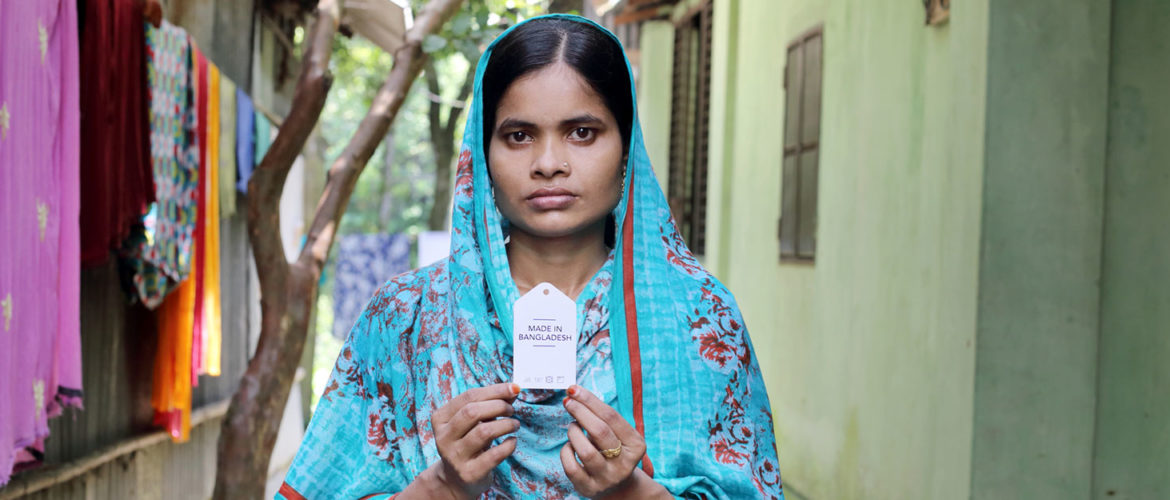Oxfam has congratulated Best & Less, Country Road, David Jones and Hanes (Bonds) on their progress towards ensuring payment of living wages to garment workers in their supply chains after the brands this week publicly committed to separate out – or ringfence – labour costs in price negotiations with their suppliers.
In committing to this policy change – which includes a clear implementation timeline and key milestones – they join at least 19 other major fashion brands* that have either undertaken to ringfence labour costs or have begun the process of implementation.
Oxfam Australia Chief Executive Lyn Morgain said once brands ensure payment of living wages – which equates to enough money earned in under 48 hours a week to afford a decent standard of living – in their supply chain, it will allow millions of garment workers, mostly women, to lift their families out of poverty.
“The livelihoods and wellbeing of the women who make our clothes should never be up for negotiation. That’s why we congratulate these brands for stepping up their progress towards ensuring workers are paid a living wage,” she said.
“By ringfencing labour costs, brands can effectively identify and protect wages during the argy-bargy of price negotiations with their suppliers.
“The significance of this shift cannot be overstated. Around 60 million people, mostly women, work in the global fashion industry worldwide. The payment of a living wage to the women who make our clothes would give many millions of people the opportunity to lift themselves out of poverty.”
The announcements come as Oxfam’s campaign for living wages, What She Makes, unveils a major advertising blitz in metropolitan shopping malls across the country throughout the festive season, to raise awareness of the payment of poverty wages in the fashion industry.
“Recent progress by brands to ensure the payment of living wages signifies the serious reflection and attitudinal change of these companies that has been sparked, undoubtedly, by increased consumer awareness and higher ethical expectations,” Ms Morgain said.
“But while these brands are taking steps towards improving the lives of the people who make our clothes, others continue to lag behind.
Ms Morgain said it was time for these brands to step up and called on shoppers to let them know they expect more.
“Today – ahead of one of the busiest shopping weekends of the year – we are launching a public advertising campaign to draw attention to this issue. We’re asking shoppers to research how their favourite brands stack up on the payment of a living wage for garment workers.”
Last month, Oxfam released a new report, Shopping for a Bargain, which revealed that the poor purchasing practices of big Australian brands – including aggressive price negotiation, inaccurate forecasting of orders, and short lead times – are driving the payment of poverty wages across the garment industry, having a profound impact on the lives of workers, mostly women.
The report called for all Australian brands to make public, credible commitments to ensure the payment of living wages, and to review their purchasing practices and urgently act to ringfence labour costs in negotiations with suppliers.
Members of the public can see how leading brands stack up by using the What She Makes Company Tracker and show their commitment to ending poverty wages by signing the What She Makes pledge.
For interviews, contact Lily Partland on 0418 118 687 / lilyp@oxfam.org.au
Notes to editor
- You can access images of the digital billboards here
*Other brands included in the What She Makes campaign that have committed to ringfencing labour costs are: Big W, Cotton On Group, Factory X (Dangerfield & Gorman), H&M, Inditex (Zara) and Wesfarmers (Kmart and Target Australia).


Comments are closed.